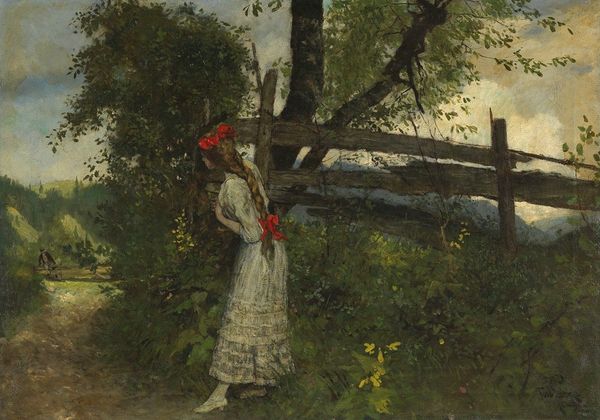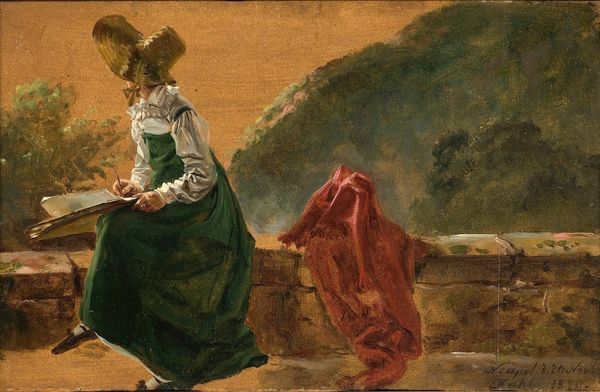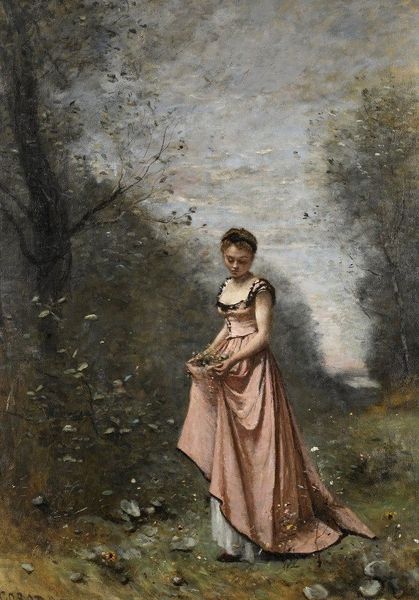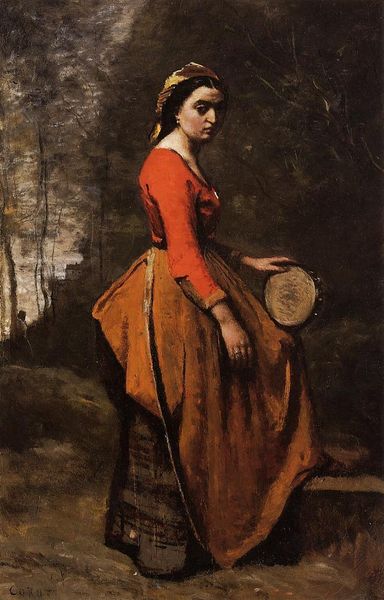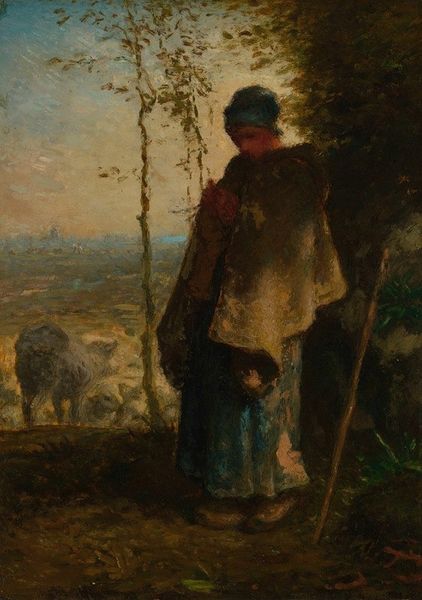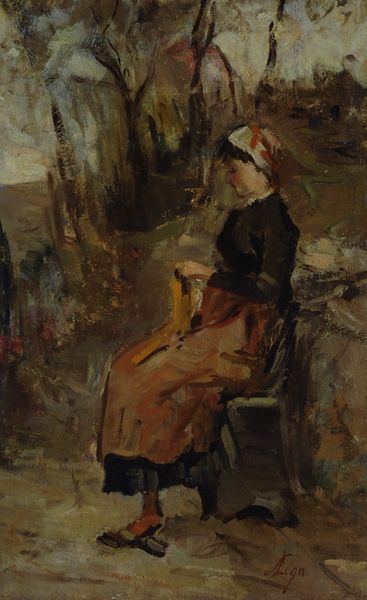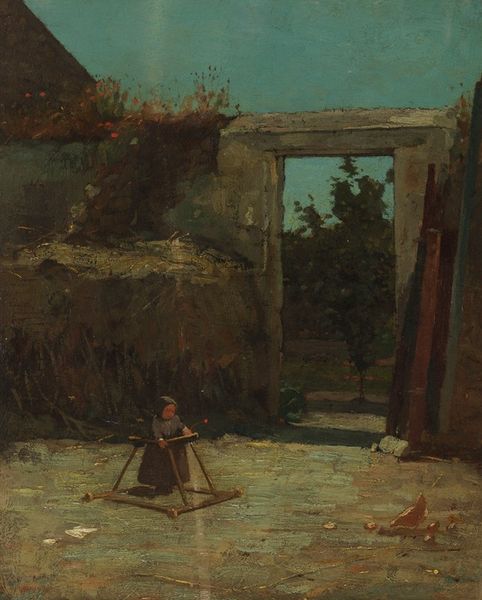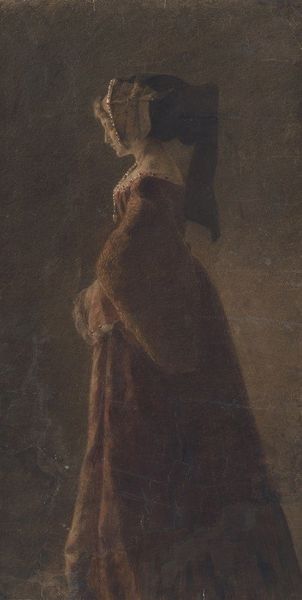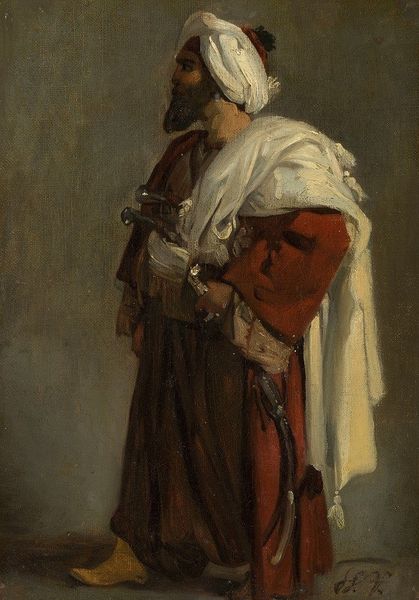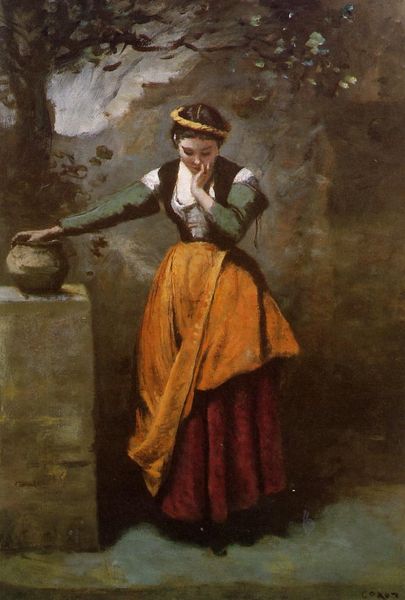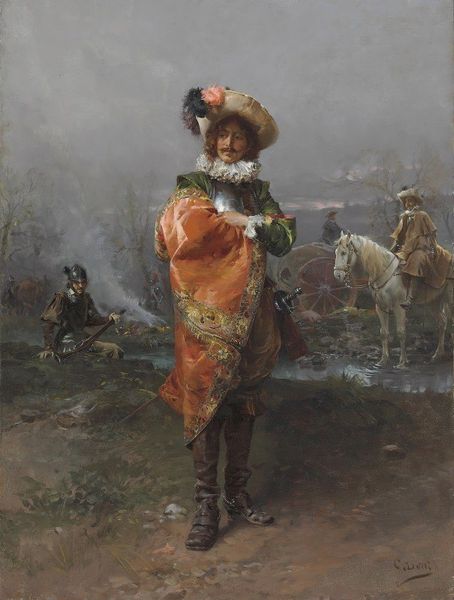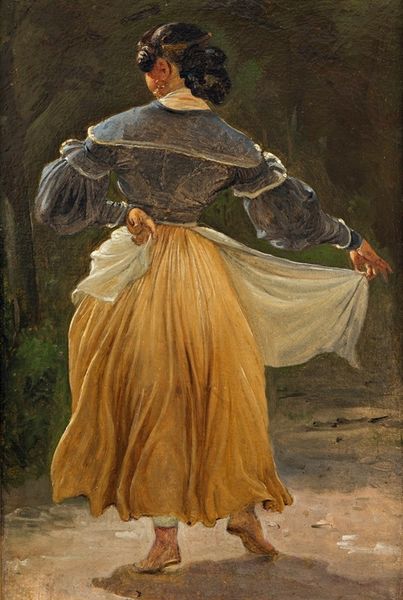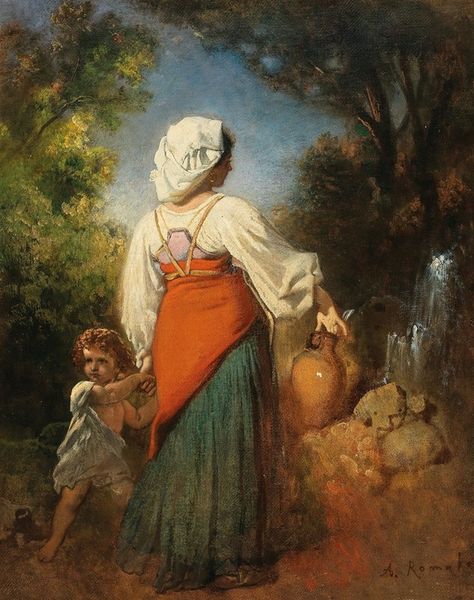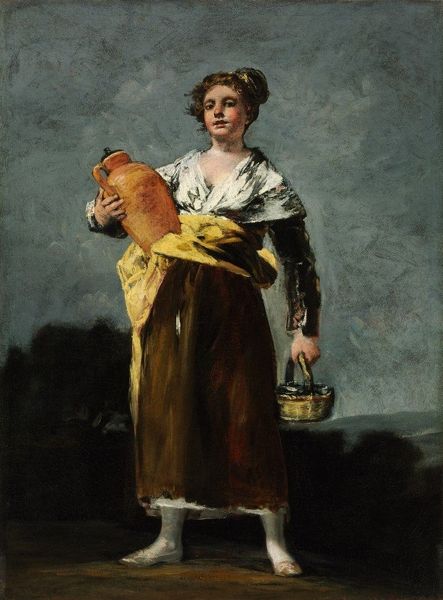
Copyright: Public Domain: Artvee
Editor: Here we have Camille Corot’s "Peasant Girl at the Spring," an oil painting from around 1860 to 1865. It has such a calm and solitary mood. The soft brushstrokes almost make her blend into the landscape. How do you interpret this work? Curator: It's tempting to see this as just a pretty, romantic scene, but I think it reflects broader issues about the role of women, particularly working-class women, in mid-19th century France. Editor: How so? Curator: Think about it. The painting obscures her face. We see her from behind, a figure defined by her labour. Water-carrying was traditionally a woman's task, wasn’t it? Consider what it meant to be a rural woman during a time of industrialisation, and limited social mobility. She’s a representation of a type, her individuality suppressed, perhaps symbolising a lack of agency. What does the subdued palette suggest to you in terms of reflecting that social constraint? Editor: It’s a stark contrast to the bright colours usually associated with Romanticism! The darker colours and her posture really highlight a sense of burden, of labour without recognition. Curator: Exactly! Corot wasn't necessarily trying to make a direct political statement, but by depicting this peasant girl in this specific way, he subtly reflects the socio-economic realities of the time. How might her being in nature change this representation? Editor: It offers some level of peace maybe, but also reminds me of women's historical connection to land labour and traditional roles. I didn’t expect so much to be packed into one picture. Curator: Art can unveil hidden realities if we view it through the right lens!
Comments
No comments
Be the first to comment and join the conversation on the ultimate creative platform.
